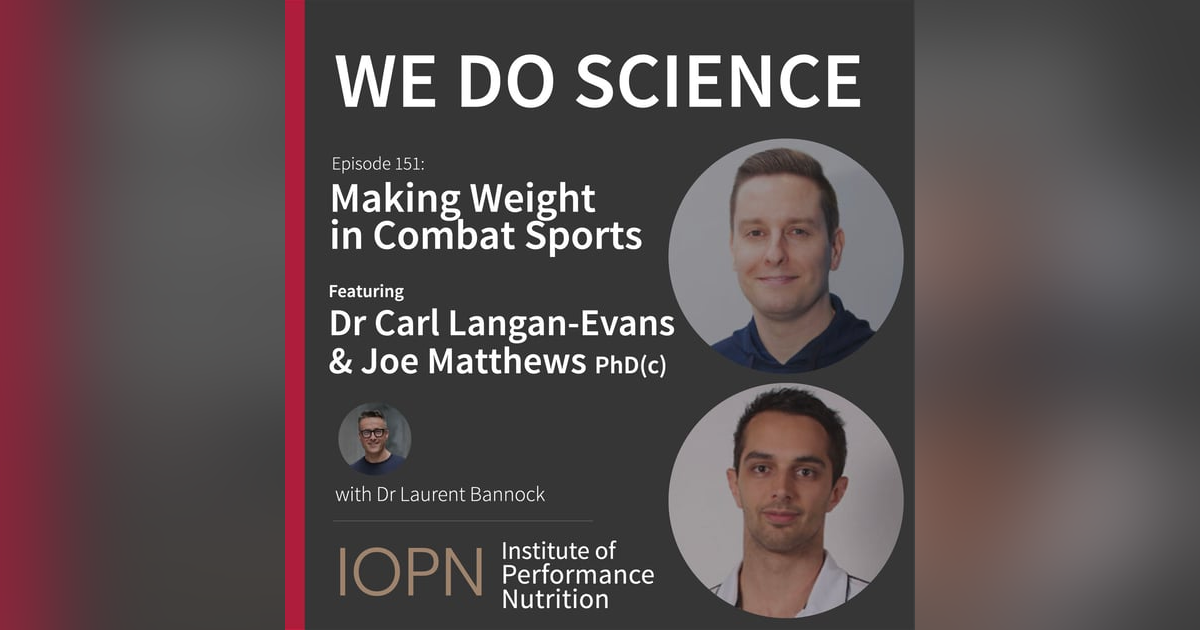Jan. 21, 2021
"Making Weight in Combat Sports" with Dr Carl Langan-Evans and Joseph Matthews PhD(c)

Episode 151 of the Institute of Performance Nutrition's "We Do Science" podcast! In this episode, I (Laurent Bannock) discuss "Making Weight in Combat Sports" with Dr Carl Langan-Evans (Liverpool John Moores University, UK) and Joseph Matthews PhD(c) (Nottingham Trent University / Birmingham City University, UK).
Discussion Topics Include:
- Overview of Combat Sports and weight classifications
- "Extreme Rapid Weight Loss" and "Rapid Weight Gain" in combat sports
- Metabolic regulation and exercise physiology relevant to combat sports
- Energy Availability, Relative Energy Deficiency, the Male and Female Athlete Triad
- Combat Sport Nutrition: an overview of the science and application into practice
Podcast Episode Transcript: Download PDF Copy
Key Paper(s) Discussed / Referred to:
- Making Weight in Combat Sports
- The Magnitude of Rapid Weight Loss and Rapid Weight Gainin Combat Sport Athletes Preparing for Competition:A Systematic Review
- Extreme Rapid Weight Loss and Rapid Weight GainObserved in UK Mixed Martial Arts Athletes Preparingfor Competition
- Combat Sport Nutrition: A Pragmatic Case Study in an Elite Mixed Martial Arts Athlete
- The Psychological and Physiological Consequences of Low EnergyAvailability in a Male Combat Sport Athlete
Related Podcast Episodes:
- #148 - "Relative Energy Deficiency: Research to Practice" with Dr Nicky Keay
- #136 - "Energy Availability: From Health to Performance" with Jose Areta PhD
- #134 - "Nutrition Behaviour Change for Professional Weight-Making Athletes" with Dan Martin PhD
Check out our other podcasts, publications, events, and professional education programs for current and aspiring sports nutritionists at www.TheIOPN.com and follow our social media outputs via @TheIOPN







